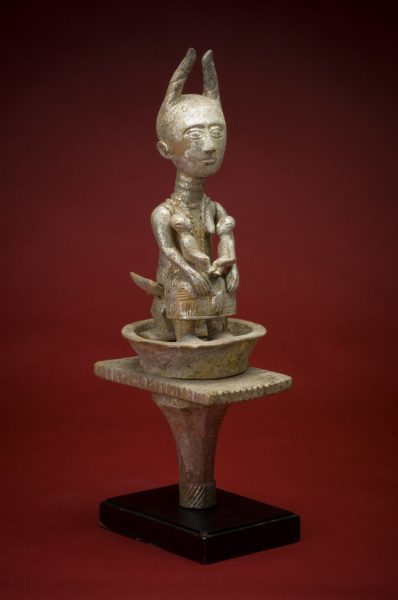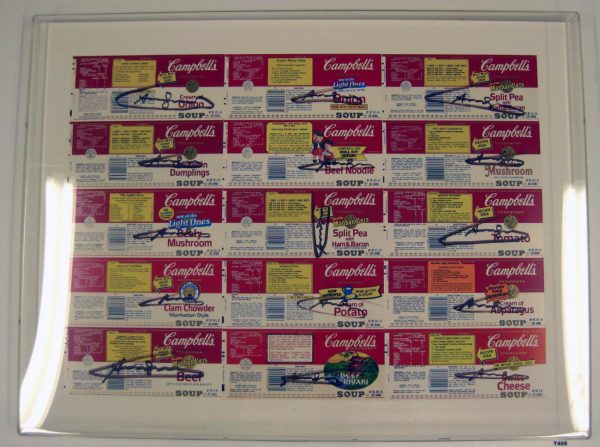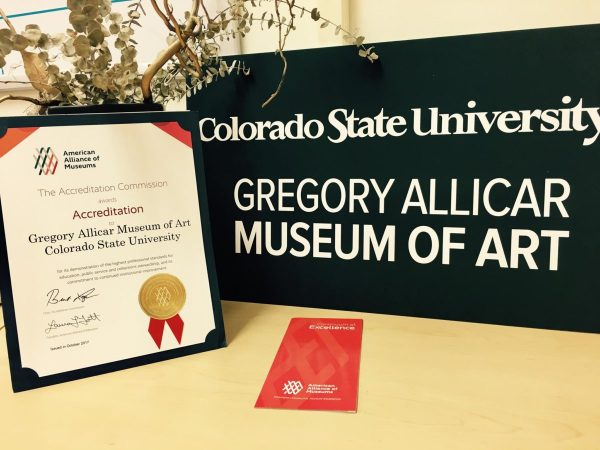My grandfather’s guitar, Baba’s coffee mug, the 1940s Fort Collins High School wool blanket, my grandmother’s class ring, the charcoal drawing my sister made when Ellie was a baby…
After your people and pets, how would you prioritize your personal belongings? If you only had a moment to decide, what material possessions would you choose to save? This critical issue was examined by the Gregory Allicar Museum of Art while designing their emergency response plan, a component of the museum’s comprehensive disaster plan, in case there is a flood or other disaster affecting the collection.
As the University Center for the Arts celebrates its tenth anniversary, the emergency response plan is receiving a major update. In addition to the basics, such as gathering critical personnel names and phone numbers, Suzanne Hale, registrar and collections manager, along with museum curators, have compiled a list of priority objects held in Colorado State University’s permanent collection.
“If there is a disaster and everyone in the building leaves and is safe, and emergency responders have arrived, if there is an opportunity to go back in to rescue or salvage some of the collection, what do we take? What do we pick?” asked Hale. Her answer may surprise you.

Is there an algorithm for that?
“When I’m asked ‘What’s it worth,’ I ask ‘In what way?’ Sometimes, it’s what is most monetarily valuable, but not necessarily,” said Hale. “It might be something particularly fragile and important to the collection and we have to get it out of a water situation where it could receive further damage.”
One item with an elevated position on the list is a prominent piece from the museum’s African collection. The Fanta linguist staff finial from Akan, Ghana—composed of wood with silver and gold leaf—was designated by collection expert Dave Riep, assistant professor in the Department of Art and Art History and associate curator of African art for the museum, as critical for saving in a disaster because the fragile golden figure would crack and flake in extreme environments.
“There are other pieces with higher monetary value, but that piece is important because of the focus of our museum and because of its materials; it absolutely needs to be out of a flooding situation,” confirmed Hale.
A piece notable for its personal significance to the museum, rather than its rarity, is Binh Danh’s Barracked (2008). Danh’s piece marks an important moment in the Gregory Allicar Museum of Art’s history as the artist was at CSU for an exhibition of his work in 2008, just prior to the opening of the museum in 2009. A piece from the exhibition was selected for purchase, making it the first work to be acquired officially by the museum.
“It’s the story behind the work that makes this one important,” mused Hale. “Binh Danh was here, and many students and faculty met him. It’s more than just the object that we’re trying to save in a disaster, it’s the irreplaceable aspects.” Though insurance would provide for the acquisition of a similar piece by Danh, it wouldn’t be that one, the one embedded in the museum’s narrative.

Another item on the list, the Andy Warhol soup can collage, is irreplaceable because it does not exist in multiples. Additionally, as detailed by Lynn Boland, the museum’s director and chief curator, it is important to the artist’s oeuvre as Warhol’s innovative contributions to the history of art are well represented in the work. “Monetary value matters, but historical significance and irreplaceability matter more. All of our works by Warhol are valuable, but the collage is unique,” stressed Boland. “I bet the soup can, as far as recognizability, has eclipsed Leonardo’s Mona Lisa. Warhol’s visit to CSU in 1981 also makes this object particularly significant to our collection.”
Disaster plan selections are also based on a piece’s provenance, or history of ownership. Perhaps a piece was owned by someone important to the museum such as a donor or emeritus professor, or perhaps it was owned by a king. The poster child of the Gregory Allicar Museum of Art, a portrait of King Louis XIV by Pierre Mignard I (ca. 1693), has extreme historical importance. “In the U.S., there aren’t very many 17th century paintings that once hung in Versailles,” stated Boland.
As a primary piece in the museum’s Hartford-Tandstad collection, the Mignard was recently conserved by Cynthia Lawrence. The Denver-based conservator restored paint and varnish around the edges, lost due to age. The prioritization of this work for conservation further defends its inclusion on the disaster plan as the conservation process is both time-consuming and expensive.

Humidity is water too
For the Gregory Allicar Museum of Art, the ability to control another form of water—humidity—is as vital as flood preparation; rapid and extreme changes in the museum’s exhibition and storage environment could cause many forms of deterioration for an object. “If we can maintain constant humidity levels, without it going way up or way down in a short amount of time, that’s what we do,” stated Hale. It is a complex task faced by the museum and their partners in CSU Facilities to balance both a comfortable temperature and relative humidity throughout the spaces.
And what is ideal relative humidity for a museum? That depends on the collection.
“Some objects are happier in a more humid environment and some are not, so you have to be mindful of that,” explained Hale. Colorado’s semi-arid environment massively impacts this balancing act.
“Overall, I like the relative humidity in our storage and gallery spaces to be between 35 and 60 percent with a minimal amount of oscillation,” said Hale. She maintains an environmental range that suits the diverse collection, which includes wood and metal objects to photographs and works on paper.
Verified as prepared
At the end of 2017, The Gregory Allicar Museum of Art was accredited by the American Alliance of Museums, the highest national recognition afforded a museum in the U.S. Alliance accreditation brings national recognition to a museum for its commitment to excellence, accountability, high professional standards, and continued institutional improvement.
In reference to water, the types of preservation practices and policies developed by CSU’s art museum are very important to the Alliance as they provide for the longevity of visual arts institutions. Fewer than 5 percent of the nation’s estimated 33,000 museums are currently accredited. CSU’s art museum is one of only 24 museums accredited in Colorado, just one of three that is Core Documents Verified, having participated in the Alliance’s museum assessment program, and the only one with accreditation in Fort Collins. One of the verified core documents is its disaster preparedness plan.

In her museum collections management course, Hale conveys that museum staff do not handle objects the way artists do in their studio or the way we handle objects in our personal collections. “We have to be more careful and thoughtful because we take care of the collection for everyone,” said Hale.
The Alliance agreed. “They were pleased that we could do so much with such a small staff and they were really impressed with our storage areas and archival storage mounts,” said Hale who added that many of the museum’s accomplishments are due to the students. “We have great students here. We train them to be confident and comfortable to perform the things that need to be done. It is a huge asset and they go on to do wonderful things.”
From water alarms to a well-devised water emergency plan, the Gregory Allicar Museum of Art has given the potentially hazardous element a lot of thought.
“As a land-grant institution, our collection is part of the public trust and we hold it and care for it for everyone. We have to protect the collections from all forms of water for ten more years and beyond,” Hale concluded.
Works Cited
Alexander, E. P., & Alexander, M. (2008). Museums in Motion: An Introduction to the History and Functions of Museums. Lanham: Rowman & Littlefield Publishers, Inc.
Simmons, J. E. (2018). Things Great and Small: Collections Management Policies. London: Rowman & Littlefield.
